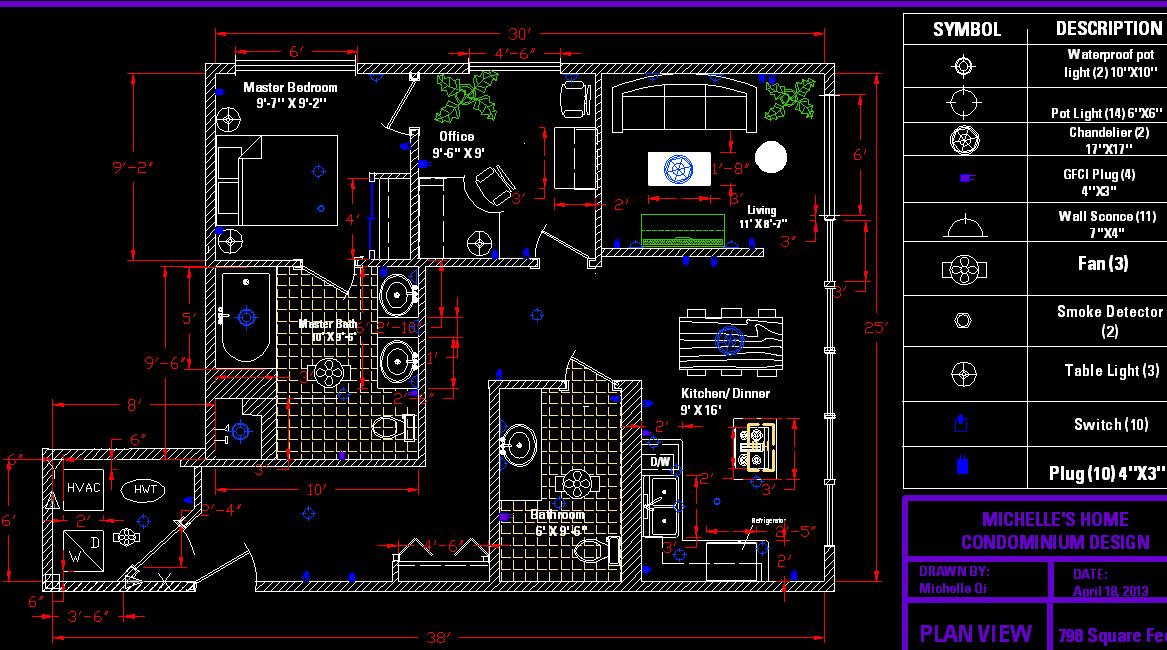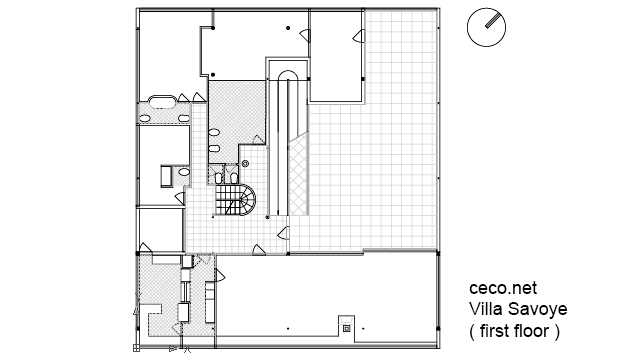The Art of AutoCAD Floor Plan Design: Creating Visually Appealing Spaces
By Abu Rizal at: April 12, 2020
AutoCAD is a powerful software tool that is widely used in the field of architecture, engineering, and construction.
It allows designers and architects to create accurate and detailed floor plans, elevations, and sections of buildings, helping them to visualize and communicate their design ideas effectively. In this article, we will explore the basics of creating a floor plan using AutoCAD.
Setting Up the Drawing Environment
The first step in creating an AutoCAD floor plan is to set up the drawing environment. This involves setting the drawing units, limits, and grid.The units should be set to the appropriate scale for the project, and the limits should be defined to the size of the building or space being designed. The grid can also be customized to make it easier to draw and align objects.
Creating Walls
Once the drawing environment is set up, the next step is to create the walls of the building. This can be done using the polyline tool, which allows you to draw straight lines and curves.You can also use the rectangle tool to draw rectangular walls. It's important to ensure that the walls are drawn to the correct scale and are accurately placed in the drawing.
Adding Doors and Windows
After creating the walls, the next step is to add doors and windows to the floor plan. You can do this using the door and window tools in AutoCAD. These tools allow you to select the type and size of the door or window, and then place it accurately in the drawing.It's important to ensure that the doors and windows are placed in the correct location and are to the correct scale.
Adding Fixtures and Furniture
Once the doors and windows are in place, the next step is to add fixtures and furniture to the floor plan. This includes items such as sinks, toilets, and cabinets in a bathroom, or desks, chairs, and bookshelves in an office.These items can be added using the block tool in AutoCAD. Blocks are pre-drawn objects that can be inserted into the drawing and are useful for repeating elements.
Adding Annotations and Dimensions
Finally, it's important to add annotations and dimensions to the floor plan. Annotations include text, symbols, and labels that provide additional information about the drawing.Dimensions are used to indicate the size and location of objects in the drawing. AutoCAD has a variety of tools for adding annotations and dimensions, including the text and dimension tools.
Conclusin
AutoCAD is a powerful tool for creating accurate and detailed floor plans. By following the steps outlined in this article, you can create a floor plan that accurately represents your design ideas.Whether you're designing a home, an office, or a commercial space, AutoCAD can help you bring your vision to life.
Autocad Floor Plan With AutoCAD Floor Plan Cloud Atlas
|
Layers, Colors, Linetypes, and Properties Designed For Autocad Floor Plan |
Redraw your floor plan in autocad for £5 : AEGraphics Towards Autocad Floor Plan
|
SketchUp Section Cut or Floor Plan to AutoCAD - Dylan Brown For Pertaining To Autocad Floor Plan |
AutoCAD - How to create Walls from a Floorplan - paplaukias Meant For Autocad Floor Plan |
AutoCAD Floor Plan Cloud Atlas
|
autocad floor plan
|
autocad drawings - floor plan some drawings from my autoca
|
Architecture 2D u0026 3D floor plan using autocad for $10
|
Convert Scanned Floor Plan to AutoCAD
|
Draw Floor Plan with AutoCAD - Civil Engineering Community
|
Autocad Floor Plan by Prabhjotsingh333 on DeviantArt
|
Draw Floor Plans and Elevations with AutoCAD: No Experience Required (2020)
|
Autocad 2D Floor Plan Freelancer
|
Autocad drawing Villa Savoye - Le corbusier - first floor dwg
|











